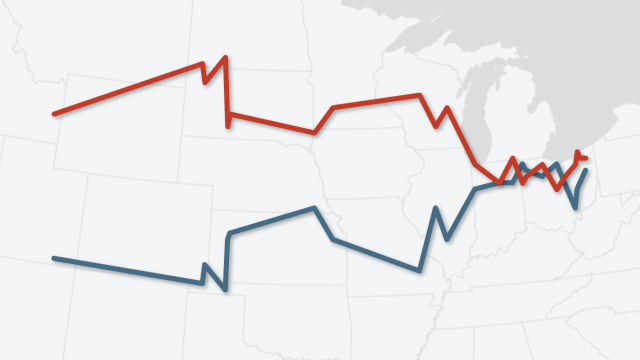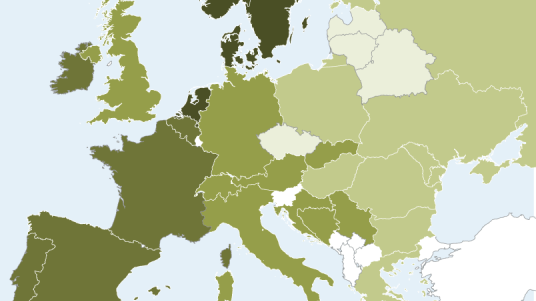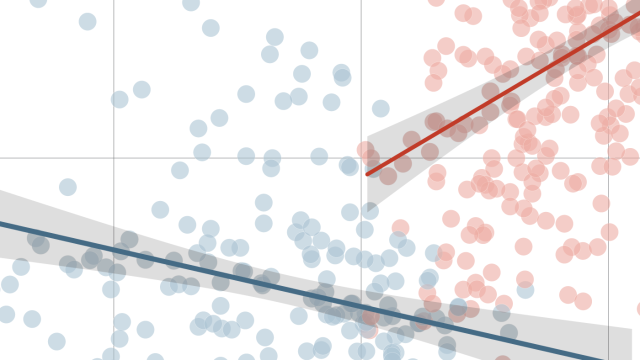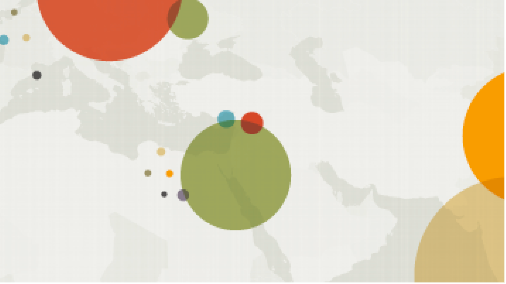

How Americans celebrate Thanksgiving
Around nine-in-ten Americans (91%) celebrate the holiday, including large majorities in all major demographic groups. Saying prayers and expressing gratitude are common at the Thanksgiving dinner table, but other traditions and activities vary – from watching sports or parades to charitable giving and holiday shopping.
Latest Publications
-
Public Narrowly Approves of Trump’s Plans; Most Are Skeptical He Will Unify the Country
Americans feel more “warmly” toward Trump today than after the 2020 or 2016 elections, and he draws broad confidence on the economy.
Most Popular
Politics & Policy

What Trump supporters believe and expect
The economy was the most important issue for Trump voters this year; 93% of his supporters said it was very important to their vote.
Features
Gender & LGBTQ

Views of DEI have become slightly more negative among U.S. workers
About half of workers (52%) now say focusing on increasing DEI at work is mainly a good thing, down from 56% in February 2023.

U.S. women are outpacing men in college completion, including in every major racial and ethnic group
Today, 47% of U.S. women ages 25 to 34 have a bachelor’s degree, compared with 37% of men.

Among unmarried adults, women without children have as much wealth as single men
In 2022, single women without children had a median wealth of $87,200, while the typical single man had $82,100.

How Americans See Men and Masculinity
Republican men stand out in views of their own masculinity, the impact of changing gender roles and men’s progress in recent decades.

12th grade girls and boys in the U.S. have different views about gender discrimination in the workplace
Many U.S. teens say women still face discrimination against gaining leadership positions and getting equal pay for equal work.
International Affairs

Before U.S. election, most Americans and Germans had a positive view of relations between their countries
While 84% of Americans and 74% of Germans perceived U.S.-German relations as good, their views differed on some international issues.

Turks Lean Negative on Erdoğan, Give National Government Mixed Ratings
55% of Turks have an unfavorable view of President Recep Tayyip Erdoğan, and about half lack confidence in the national government.

Slight uptick in Americans wanting U.S. to help diplomatically resolve Israel-Hamas war
In the year since Hamas attacked Israel, and Israel responded by invading Gaza, U.S. public opinion on the war shifted modestly.

Most people in 35 countries see the UN favorably, but views have dipped in some places
A median of 58% across 35 countries have a favorable view of the organization, while 31% have a negative view.
Internet & Technology

A majority of U.S. TikTok users are there for product reviews and recommendations
A majority of U.S. adult TikTok users (62%) say a reason they use the site is to look at product reviews or recommendations.

Majority of Americans aren’t confident in the safety and reliability of cryptocurrency
A 63% majority of Americans have little or no confidence that cryptocurrencies are reliable and safe, but some groups are more wary than others.

Social Media Fact Sheet
Today YouTube and Facebook are the most-widely used online platforms. Explore the demographic patterns and trends shaping the social media landscape.
Our Methods

U.S. Surveys
Pew Research Center has deep roots in U.S. public opinion research. Launched as a project focused primarily on U.S. policy and politics in the early 1990s, the Center has grown over time to study a wide range of topics vital to explaining America to itself and to the world.

International Surveys
Pew Research Center regularly conducts public opinion surveys in countries outside the United States as part of its ongoing exploration of attitudes, values and behaviors around the globe.

Data Science
Pew Research Center’s Data Labs uses computational methods to complement and expand on the Center’s existing research agenda.

Demographic Research
Pew Research Center tracks social, demographic and economic trends, both domestically and internationally.

Decoded
Pew Research Center tracks social, demographic and economic trends, both domestically and internationally.
Our Experts
“A record 23 million Asian Americans trace their roots to more than 20 countries … and the U.S. Asian population is projected to reach 46 million by 2060.”

Neil G. Ruiz,
Head of New Research Initiatives
Methods 101 Videos

Methods 101: Random Sampling
The first video in Pew Research Center’s Methods 101 series helps explain random sampling – a concept that lies at the heart of all probability-based survey research – and why it’s important.
Signature Reports

America’s News Influencers
Race and LGBTQ Issues in K-12 Schools
Representative Democracy Remains a Popular Ideal, but People Around the World Are Critical of How It’s Working
Americans’ Dismal Views of the Nation’s Politics
Measuring Religion in China
Diverse Cultures and Shared Experiences Shape Asian American Identities
Editor’s Pick

Many Americans perceive a rise in dangerous driving; 78% see cellphone distraction as major problem
About a third of UN member states have ever had a woman leader
What’s new with you? What Americans talk about with family and friends
Same-Sex Marriage Around the World
Is College Worth It?
Broad Public Support for Legal Abortion Persists 2 Years After Dobbs
Immigration & Migration

Trump and Harris Supporters Differ on Mass Deportations but Favor Border Security, High-Skilled Immigration
Most U.S. voters say immigrants – no matter their legal status – mostly take jobs citizens don’t want
Migrant encounters at U.S.-Mexico border have fallen sharply in 2024
What the data says about immigrants in the U.S.
U.S. immigrant population in 2023 saw largest increase in more than 20 years
Social Media

Who U.S. Adults Follow on TikTok
Social Media Fact Sheet
More Americans – especially young adults – are regularly getting news on TikTok
Support for a U.S. TikTok ban continues to decline, and half of adults doubt it will happen
Many Israelis say social media content about the Israel-Hamas war should be censored
© 2024 Pew Research Center

















